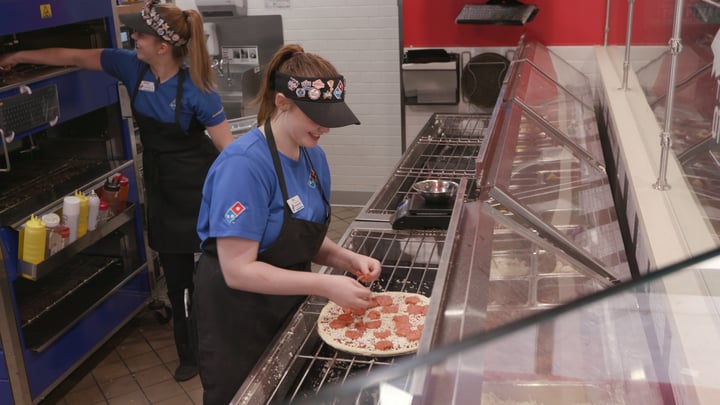
- Home
- Crunchtime Blog
- 3 Ways Tech Improves Food Safety in C-Stores According to Love’s Travel Stops

3 Ways Tech Improves Food Safety in C-Stores According to Love’s Travel Stops
Food safety technology has come a long way. More companies are tracking temperatures digitally, using automation to streamline operations, and taking the guesswork out of date labeling through digital label printers. We've outlined 3 key areas where technology can be used to improve food safety practices in c-stores from Love’s Travel Stops Director of Food Service, Nick Bouse. Let's dive in.
Tech-Enabled Traceability
The old way: Traditionally, food safety was tracked on pen and paper, an inconsistent and cluttered method that could rarely guarantee actual food safety. Between illegible handwriting and coffee stains, food safety logs should be thought of as relics of the past and replaced with digital options, where the four-hour window for time and temperature control can be consistently upheld. Bouse explains that using “ pen and paper for temperature monitoring, temperature logs, lack visibility, and it lacks traceability.”
The new way: With the technology available today, food can be monitored through each step of the production cycle to ensure it maintains its safety. From the farm to the distribution center to the store where the food will be served, there should be consistent monitoring that is traceable throughout each phase of the supply chain. This way, if needed, the product can be traced back through the supply chain to determine where or if the food became contaminated or hazardous. Another innovation we’ll see y in coming years is the use of artificial intelligence to monitor food safety. Bouse mentions that “a lot of AI vendors are looking at solutions that can help us monitor food and, to remove the level of human error that we all have.”

Communication
The old way: Technology today allows for instant communication, something that has not always been possible. In the past, if contact needed to happen, it required individual phone calls to each location or for an email to be sent, meaning that communication was much slower and inconsistent, and teams could not respond or react very quickly.
The new way: Now, any time information needs to be quickly shared, there is technology that can be used to notify employees instantly. Meanwhile, technology can be used to confirm if each location received the notification and if they reacted. For example, if a product needs to be recalled and taken off the shelf system-wide, then a message or task can be sent out to the devices at each store, and once employees have removed the item from the shelf, they can mark the task as completed. This way, management can easily recognize which stores did not have a chance to remove the recalled item, and then follow up with them. Bouse states, “The ability to communicate effectively and to follow up directly is a big deal.”

Training
The old way: In the past, businesses have relied on experienced employees to train new team members. While this method can work, it can be inconsistent, with employees getting different levels of training or ending up with gaps in knowledge. Also, during times of low staffing, stores can find themselves struggling to allocate time for experienced workers to work alongside new employees.
The new way: Technology is increasingly helping businesses train their employees. Technology can expedite the training process by using training videos, gamified experiences, and measuring and tracking expertise. Bouse explains that technology can help recognize education opportunities in real-time and that upper management allows more insight into the training status of employees at each store. Meanwhile, technology can help reduce what employees have to memorize, like product hold times, meaning that employee learning can be focused on other essential tasks and procedures.
As technology advances, we are sure to see new ways that it can help keep food safe. As new technology makes its way into stores, there can be some resistance from employees. Bouse says that if technology is “intuitive to the user, the implementation and the migration from your workforce is going to be much simpler.”
To learn more visit
Share this post
Related


3 Ways Domino’s Largest Franchise Promotes Operational Consistency


